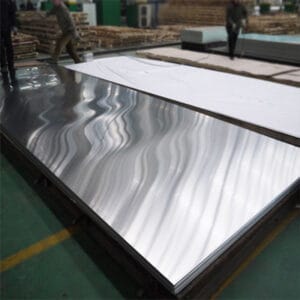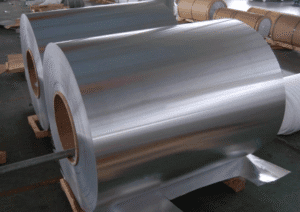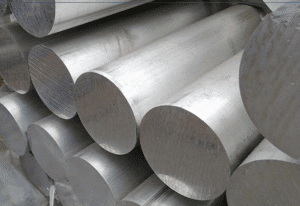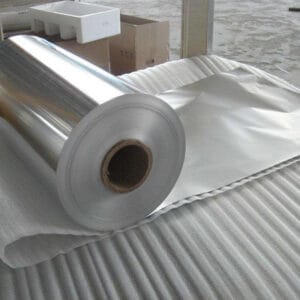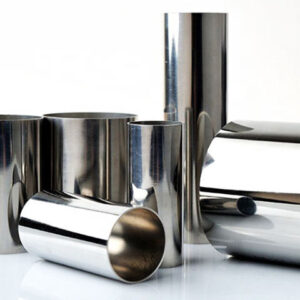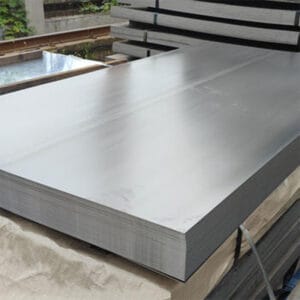Choosing the right aluminum sheet can be tough for manufacturers, builders, and distributors. They need to balance strength, corrosion resistance, formability, and cost.
In this guide, we will explain how to choose the right aluminum sheet. We will cover alloy type, thickness, temper, and finish. We will also give practical buying tips to help you get good quality every time.
Why choosing the right aluminum sheet matters
Aluminum sheet is an exceptionally versatile material used today. Used in car body panels, ship parts, kitchen equipment, and cladding systems.
However, each alloy offers distinct properties. Selecting the incorrect option may result in cracking, inadequate corrosion resistance, or extra costs. Knowing how to select the appropriate aluminum sheet ensures sustained performance and efficiency throughout your manufacturing process.
Step 1:Understand Aluminum Alloys
Aluminum sheets are categorized by alloy series, each suited to specific applications.
Here’s a quick breakdown:
| Alloy Series | Main Alloying Element | Key Features | Common Applications |
|---|---|---|---|
| 1xxx Series (Pure Aluminum) | 99%+ Al | Excellent corrosion resistance, high ductility | Chemical equipment, reflectors |
| 3xxx Series (Al-Mn) | Manganese | Moderate strength, good formability | Cookware, roofing, decorative panels |
| 5xxx Series (Al-Mg) | Magnesium | High strength, corrosion resistance | Marine, transportation, pressure vessels |
| 6xxx Series (Al-Mg-Si) | Magnesium & Silicon | Good weldability and machinability | Construction, automotive, frames |
| 7xxx Series (Al-Zn) | Zinc | High strength, low weight | Aerospace, sporting goods |
If you are unsure how to choose the right aluminum sheet, start by listing the performance priorities — such as corrosion resistance or machinability — and match them with the appropriate alloy series.
Step 2:Choose the Correct Temper
The temper indicates how the aluminum was treated to achieve specific mechanical properties:
- O (Annealed): Soft, excellent formability
- H-series (Strain-hardened): Higher strength, less formable
- T-series (Heat-treated): Very high strength, good machinability
For example, 3003-H14 is a common half-hard alloy. It is used for roofing and ductwork. On the other hand, 6061-T6 has higher tensile strength. This makes it ideal for structural components.
Step 3: Decide on Thickness and Size
When determining how to choose the right aluminum sheet, thickness plays a major role in both performance and cost.
| Application | Typical Thickness (mm) |
|---|---|
| Roofing / Cladding | 0.5 – 1.0 mm |
| Automotive Panels | 1.0 – 2.0 mm |
| Marine / Structural | 2.0 – 6.0 mm |
| Industrial Machinery | 6.0 mm and above |
Always confirm thickness tolerances with your supplier, as variations can affect assembly or weight-sensitive designs.
Step 4: Select the Right Surface Finish
Surface finishes influence both appearance and protection. Common finishes include:
- Mill Finish: Natural, slightly reflective, most economical
- Brushed Finish: Linear texture, modern appearance
- Anodized Finish: Enhanced corrosion resistance, available in colors
- Painted / Coated Finish: Used for architectural and decorative panels
If your project involves exposure to weather, anodized or coated aluminum sheets are more durable options.
Step 5: Compare Standards and Certificates
Professional buyers always check if suppliers follow recognized standards such as:
- ASTM B209 / EN 485 / JIS H4000 — governs thickness, flatness, and mechanical properties
- ISO 9001 Certification — ensures quality management in production
- RoHS / REACH Compliance — confirms material safety for consumer goods
These standards help guarantee your chosen aluminum sheets meet international quality expectations.
Step 6: Verify Supplier Capabilities
When purchasing, it’s not just how to choose the right aluminum sheet, but also where to buy it that matters. A reliable supplier should provide:
- Stable alloy composition and batch traceability
- Clear inspection reports and MTCs (Mill Test Certificates)
- Cutting, slitting, and protective film options
- Consistent delivery times and stock availability
Step 7: Applications and Alloy Selection Tips
| Industry | Recommended Alloys | Key Features |
|---|---|---|
| Construction | 1100, 3003, 5005 | Lightweight, corrosion-resistant |
| Transportation | 5052, 5083, 6061 | High strength, fatigue resistance |
| Aerospace | 2024, 7075 | Very high strength-to-weight ratio |
| Food & Beverage | 1050, 3003 | Hygienic, easy to form and clean |
| Marine | 5083, 5754 | Superior seawater corrosion resistance |
By matching the alloy to your industry, you ensure your sheets perform efficiently and safely.
Bonus Tips for Cost Optimization
- Order standard sizes to avoid custom cutting fees.
- Buy in bulk for better mill pricing and freight efficiency.
- Request samples before placing large orders.
- Check local stock for urgent delivery needs.
Following these strategies helps you stay competitive without compromising quality.
Sustainability and Recycling
Aluminum is 100% recyclable without losing its quality. Recycled sheets consume up to 95% less energy than primary aluminum production. When choosing materials, ask suppliers about recycled content and sustainability certifications — it’s an easy way to enhance your company’s ESG profile while reducing costs.
Conclusion
Learning how to choose the right aluminum sheet ensures that every project — from architectural design to industrial manufacturing — benefits from the ideal combination of performance, appearance, and cost efficiency.
By evaluating alloy type, thickness, temper, surface finish, and supplier quality, you can confidently source aluminum sheets that meet both technical and aesthetic requirements for your application.

